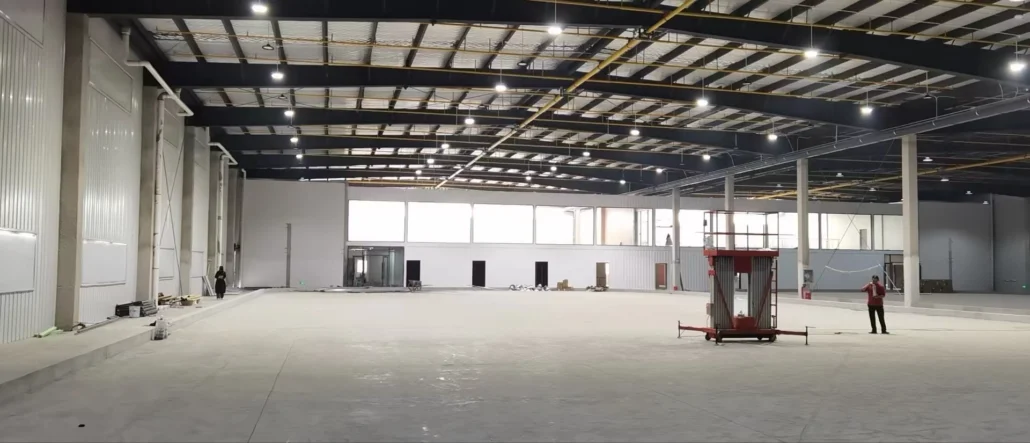
LED high bay lights are widely used in industrial settings for their energy efficiency and durability. They offer several advantages over conventional lighting solutions such as reduced energy consumption, longer lifespan, and improved safety. In this article, we will discuss the benefits of LED high bay lights in detail.
1. Energy efficiency
LED high bay lights are highly energy efficient. They use a fraction of the energy consumed by conventional lighting solutions such as metal halide or fluorescent lights. LED lights have a luminous efficacy of 130lm/W, which is much higher than traditional lighting solutions. The high luminous efficacy of LED high bay lights means that they can produce a similar amount of light using less energy. This, in turn, reduces energy consumption and electricity bills.
2. Reduced maintenance costs
LED high bay lights have a longer lifespan than conventional lighting solutions. They can last up to 5 times longer than traditional lights, reducing maintenance costs significantly. LED lights require minimal maintenance and do not require frequent replacements, which can save time and effort. Additionally, LED high bay lights are more durable than traditional lights, reducing the need for frequent replacements due to breakage.
3. Improved safety
LED high bay lights offer improved safety in industrial settings. They produce better quality light, which enhances visibility in the workspace, resulting in fewer accidents. The improved light quality also reduces eye strain and fatigue, resulting in a safer working environment. Additionally, LED high bay lights do not emit heat, reducing the risk of fire hazards.
4. Better lighting quality
LED high bay lights produce better quality light than traditional lighting solutions. They have a high color rendering index (CRI) which ensures that colors appear more accurate under the light. The improved CRI also enhances visibility in the workspace, resulting in a more productive and efficient work environment.
5. Reduced environmental impact
LED high bay lights have a significantly lower environmental impact than traditional lighting solutions. They consume less energy, reducing the carbon footprint, and producing fewer greenhouse gas emissions. Additionally, LED lights do not contain hazardous materials such as mercury, unlike fluorescent lights, which can pose a risk to the environment if not disposed of correctly.
6. Customizable lighting solutions
LED high bay lights offer customizable lighting solutions for industrial settings. The lights can be adjusted to provide the appropriate amount of light for specific tasks, resulting in a more efficient workspace. Additionally, LED high bay lights can be controlled using smart lighting systems, allowing for further customization and energy savings.
7. Improved productivity
LED high bay lights can improve productivity in industrial settings. The improved lighting quality and reduced eye strain and fatigue result in a more comfortable work environment. This, in turn, improves concentration and productivity levels, resulting in an overall increase in efficiency.
8. Cost-effective
Although LED high bay lights generally have a higher upfront cost compared to traditional lighting solutions, they offer a significant return on investment (ROI) over time. The reduced energy consumption and maintenance costs result in reduced operating costs, resulting in long-term cost-savings. Additionally, the improved productivity levels result in increased revenue generation, further enhancing the ROI.

Factors to consider when purchasing High Bay Lights
Before making a decision on which high bay lights to purchase, there are various factors that you need to consider. These factors are as follows:
1.Price – LED high bay lights tend to be more expensive than other bulbs, but they offer considerable energy savings over time.
2.Durability – When installing high bay lights in harsh environments, it is essential to choose the most durable to ensure lower maintenance costs.
3.Energy efficiency – choose a high bay light that is energy-efficient for optimal performance.
4.Mounting height – this is an important factor that decides the ideal type of light to purchase.
5.Lumens per watt – this refers to the amount of light visible for a specific wattage. The higher the Lumen per watt, the more efficient the bulb is in emitting light.
6.Environmental requirements – Depending on the application the lights will be used for, they need to be able to withstand harsh environments, such as high temperatures, humidity, or exposure to chemicals.
7.Lighting requirements – Every facility has different lighting requirements, so you need to choose a high bay light that meets everyone’s needs.
